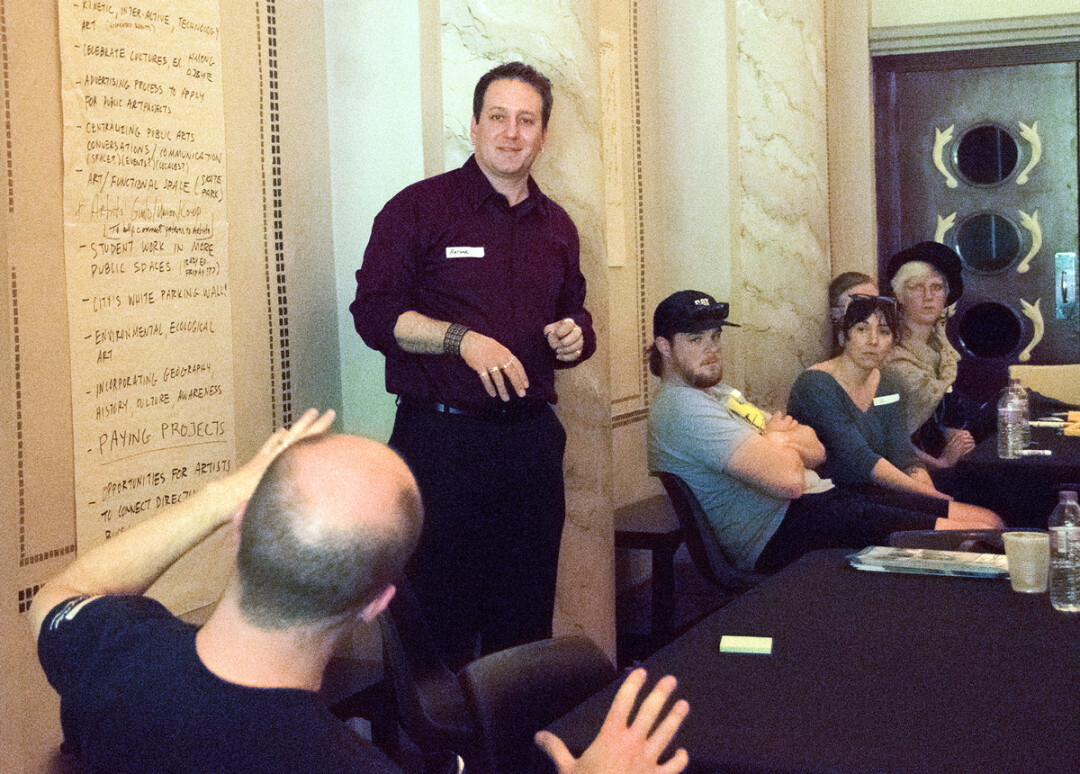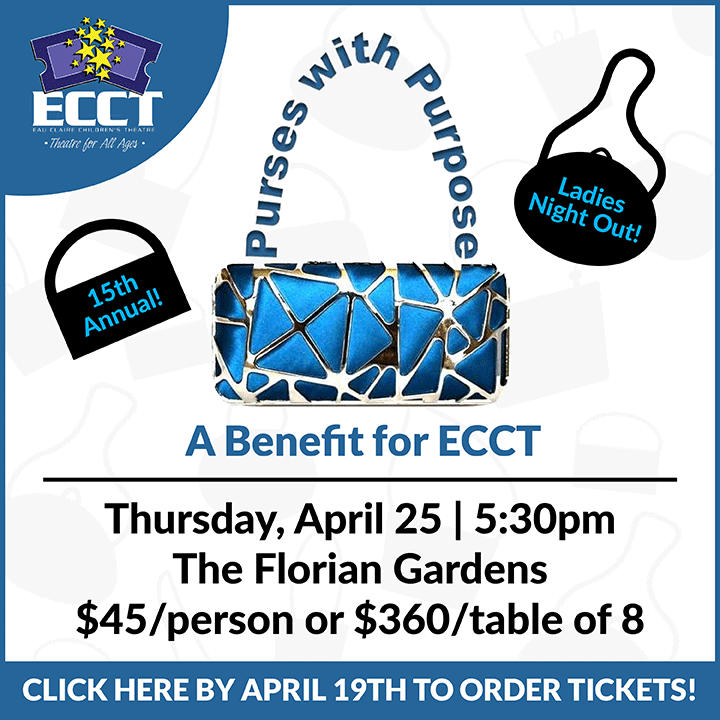A Path for Public Art: Forum addresses challenges, opportunities for public art in the Valley
Tom Giffey, photos by Kelly Irish |

The future of public art in Eau Claire could include temporary installations, interactive technology, better use of vacant properties and spaces, and the creation of an artists’ guild or co-op.
“I think art has become part of the conversation in Eau Claire, and people have been more comfortable with different types of art.” – Julie Pangallo, Sculpture Tour Eau Claire
Those are just a few of the scores of ideas generated during a community conversation about public art held April 29 at the Eau Claire Regional Arts Center. The event – which was part state-of-the-arts-scene assessment and part brainstorming session – attracted about 40 artists, businesspeople, and other interested community members. Attendees heard brief presentations by a variety of art community leaders, then discussed challenges and opportunities facing artists and art groups who want to bring more art to the public.
“Public art can reflect the heart of our community, or it can rip our heart out and stomp on it,” said Rose Dolan-Neill, director of visual arts at ECRAC and one of the event’s organizers. Increasingly, speakers said, art has become a closer reflection of the Chippewa Valley’s heart.
“I think art has become part of the conversation in Eau Claire, and people have been more comfortable with different types of art,” said Julie Pangallo, executive director of Sculpture Tour Eau Claire. The tour is now entering its eighth year of bringing dozens of sculptures to public places around the city, and the latest season includes pieces of artwork that the public likely wouldn’t have accepted a few years ago, Pangallo noted.
Other speakers also discussed ways to expand public art in terms of genre, format, and location. CV Peterson, a performance artist who recently returned to her Chippewa Valley roots after artistic sojourns in Chicago and abroad, discussed her desire to bring more performance art to the area. While performance art can be confusing and challenging to those unfamiliar with it, it can also bring beauty to public places when passersby encounter performances and installations by happenstance, she said. Experiencing performance art in this way can familiarize the public with new art forms and pave the way for more challenging works.
Public acceptance (or lack thereof) of taboo subjects and themes was identified as a barrier to public art, as were restrictive ordinances, organizational agendas, and the continuing stigma that art is a waste of money. Pangallo, of the Sculpture Tour Eau Claire, emphasized the importance of ensuring that artists get paid and that arts organizations can continue to thrive. Pangallo noted that all artists who lease their sculptures for the tour receive a stipend, and that the tour has facilitated the sale of more than $400,000 worth of sculptures in the community. And while the tour has brought art directly to the public and raised the profile of a growing number of regional sculptors, it also faces the funding challenges common to arts nonprofits – in particular, convincing potential donors that the arts are worth their attention when compared with other worthy causes. “There’s a lot of donor fatigue right now because support for social projects have gone away and support for art projects have gone away,” Pangallo said.
The event was held in the lobby of the State Theatre, a building that will soon be supplanted by the Pablo Center at the Confluence, which is under construction just a few blocks away. And while the new arts center looms large in any consideration of art in Eau Claire, it’s not where the discussion ends.
“The conversation about public art often goes straight to the venues,” rather than the people and the stories they tell, said Ann Sessions, executive director of the Chippewa Valley Theatre Guild. The Eau Claire area is fortunate to have vibrant theater scene, Sessions said, including several up-and-coming groups. “We’re kind of on the precipice of great things,” she said.
Jason Jon Anderson, executive director of the Pablo Center, said that while the new facility will be world-class and will draw top touring talent, it will also focus on collaborating with local artists and art groups. “I think there’s some fear in the community that we’re going to be a big bully,” he said. However, he assured the audience that those who operate the center realize that it can’t be priced like Chicago if it’s going to be successful.
The community conversation was organized by members of the Pablo Center’s education and outreach committee in conjunction with UW-Eau Claire Continuing Education’s new Artrepreneur Program. Organizers said another community conversation will be held in several months, possible after the Pablo Center at the Confluence has opened in September.




















